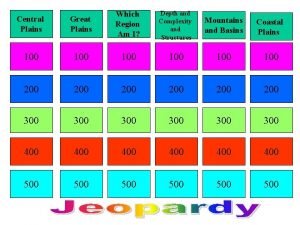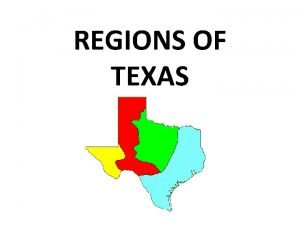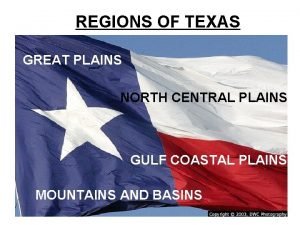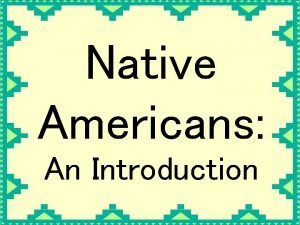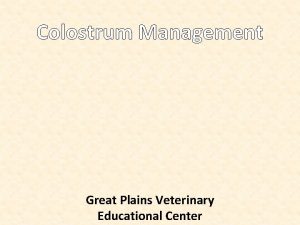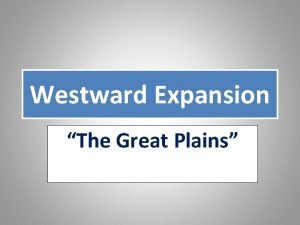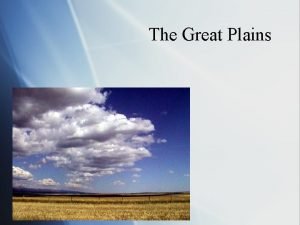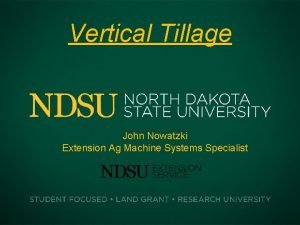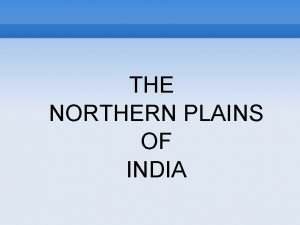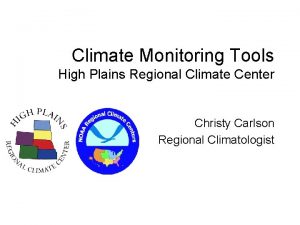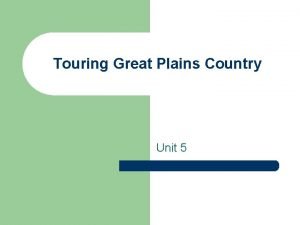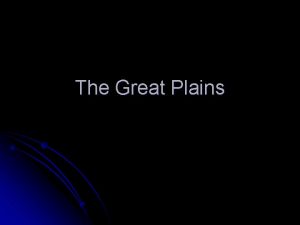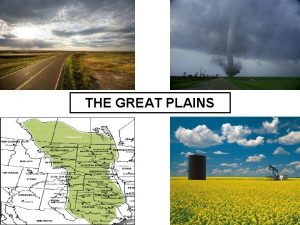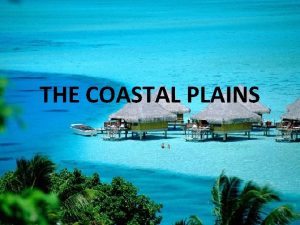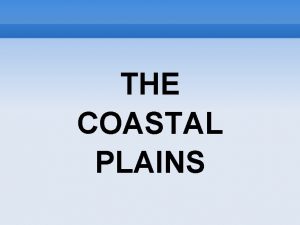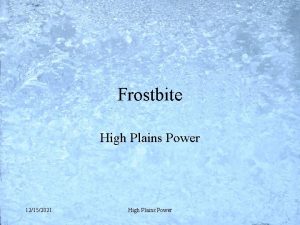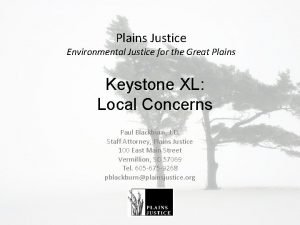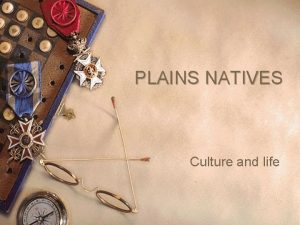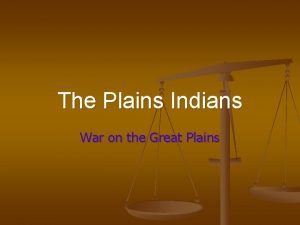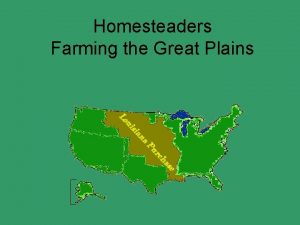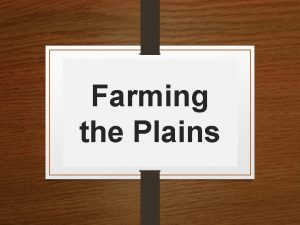3 4 The Great Plains The High Plains


















- Slides: 18

3. 4 The Great Plains

The High Plains • The Texas Great Plains includes two subregions: The High Plains and the Edwards Plateau. • The High Plains subregion covers most of the Texas Panhandle. • The land of the High Plains is higher thatn the Central Plains region.

The High Plains • A hard bed of rock below the soil known as the Caprock is another noticeable feature in the area. • Erosion of the rock has created cliffs called escarpments – along its eastern and western sides.

The High Plains • Over millions of years the Red River has cut a deep canyon inot the Caprock. • Palo Duro Canyon is at least 800 feet deep and more than 60 miles long. • However, the High Plains subregion is mostly flat open prairie.

The High Plains • When Spanish explorers first saw the High Plains they named it the Llano Estacado. • The High Plains receives little regular rainfall. • Early settlers here were certain that the land could not be farmed.

The High Plains • However, the rich grassland did attract cattle ranchers. • Today feed lots – where cattle are raised on feed rather than grass – are scattered throughout the High Plains.

The High Plains • In recent decades much of the grassland has been turned into farmland. • Farmers pump water out of the Ogallala Aquifer to irrigate their fields.

The High Plains • Texans have discovered large deposits of oil and natural gas in the High Plains area. • Oil wells dot the subregion. • The few cities in the subregion proved services for the ranching, farming and oil industries.

The High Plains • Lubbock and Amarillo serve as meat processing and distribution centers, while Midland Odessa have several oil companies.

The Edwards Plateau • The Edwards Plateau subregion lies just south of the High Plains. • The Edwards Plateau is separated from the Gulf Coast Plain by the Balcones Escarpment. • This limestone ridge lies on a fault, or break in the Earth’s crust. This fault extends from the southwestern part of Texas through San Antonio and Austin.

The Edwards Plateau • The Edwards Plateau is a high hilly area. • A deep hard layer of limestone lies just below the plateau’s soil. • Streams have cut deep canyons and valleys into the limestone plateau. • Rainfall and wind have also swept away soil in parts of the plateau

The Edwards Plateau • This erosion has contributed to the rocky landscape. • In most areas, soil erosion has left only a thin layer of soil above the limestone. • Only small clumps of grass, shrubs and cedar trees grow in the soil.

The Edwards Plateau • Where the soil is deeper, short prairie grasses and mesquite trees grow. • Ranchers raise cattle in many of the areas where these short grasses grow.

The Edwards Plateau • Ranchers have adapted to the environment in rockier areas by raising sheep and goats. • Mohair from goats and wool from sheep are sold to make clothes and other products. • Ranchers also lease their land for recreation and hunting.

The Edwards Plateau • Although the landscape of the Edwards Plateau is often rugged, Texans have settled and prospered in the region. • The largest city, Austin is the state capital, les at the eastern edge of the plateau.

The Edwards Plateau • Austin is the home for many high-tech industries and the University of Texas. • The city of San Angelo serves as a distribution and manufacturing center. • Del Rio has prospered with the growth of tourism and trade with Mexico.

The Edwards Plateau • The Llano Basin is in the northeastern area of the Edwards Plateau. • The basin was formed by erosion from the Colorado River and its tributaries. • Because of this erosion, the Llano Basin lies some 1, 000 feet lower than the Edwards Plateau.

The Edwards Plateau • There are few towns in the basin. • Most residents are farmers or ranchers. • Hunting and tourism also contribute to the basin’s economy.
 Central plains center of amarillo, tx
Central plains center of amarillo, tx 4 regions of texas powerpoint
4 regions of texas powerpoint Texas great plains major cities
Texas great plains major cities Great plains of canada
Great plains of canada Microsoft business solutions great plains
Microsoft business solutions great plains Great plains ada
Great plains ada Edwards plateau landforms
Edwards plateau landforms Great plains
Great plains Settling on the great plains section 2
Settling on the great plains section 2 Great plains veterinary educational center
Great plains veterinary educational center Great plains westward expansion
Great plains westward expansion What words describe the great plains?
What words describe the great plains? Great plains network
Great plains network Great plains ultra till
Great plains ultra till The bhangar plains
The bhangar plains Enchanted rock weathering
Enchanted rock weathering Weathering in the rolling plains
Weathering in the rolling plains Xm acis
Xm acis White plains high school guidance
White plains high school guidance
